World's Best Shark Dives: 20 Apex Encounters
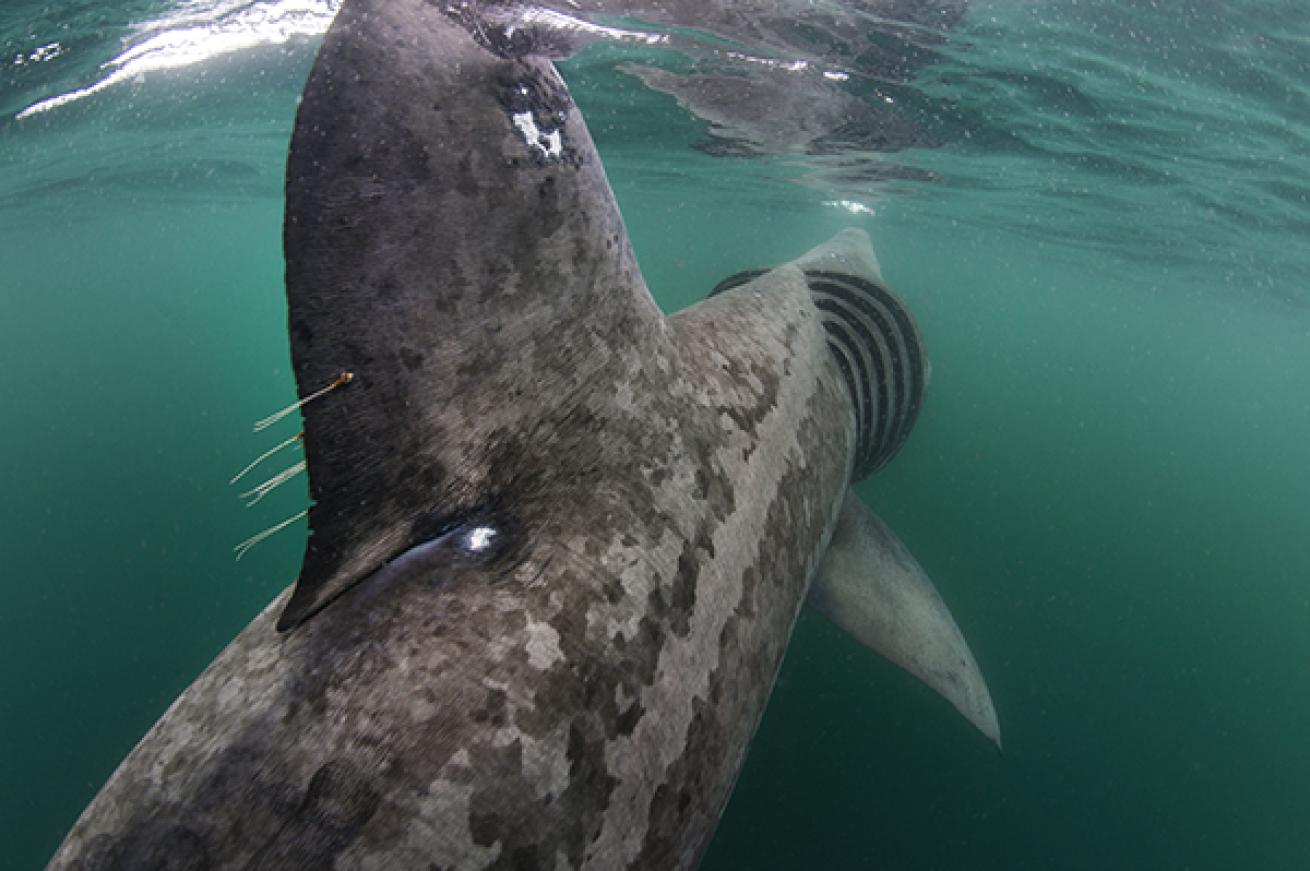
Alexander Mustard, amustard.comMysterious migratory basking sharks appear with some regularity off of the coast of Scotland — but you've got to know where and when to make it happen.
Basking sharks
Oban, Scotland
When a giant, 6-foot-tall dorsal fin cuts through the dark water directly in front of you, a human’s primal instinct takes over. Immediately your heart will start to race in a rush of adrenaline, no matter how firm your intellectual grasp of the fact that the basking shark is a filter feeder that consumes only the sea’s tiniest organisms, not a fierce predator.
Growing a few scales beyond 30 feet long (it’s second for size behind the whale shark), the species boasts one of the largest mouths in the fish kingdom, and it will be impressively gaping as the gentle giant cruises by — completely ignoring you — focused fully on feeding. Although it is a secretive, migratory species thought to follow its food source in temperate seas, the cold, fertile waters of the Scottish coast are a consistent location for encounters.
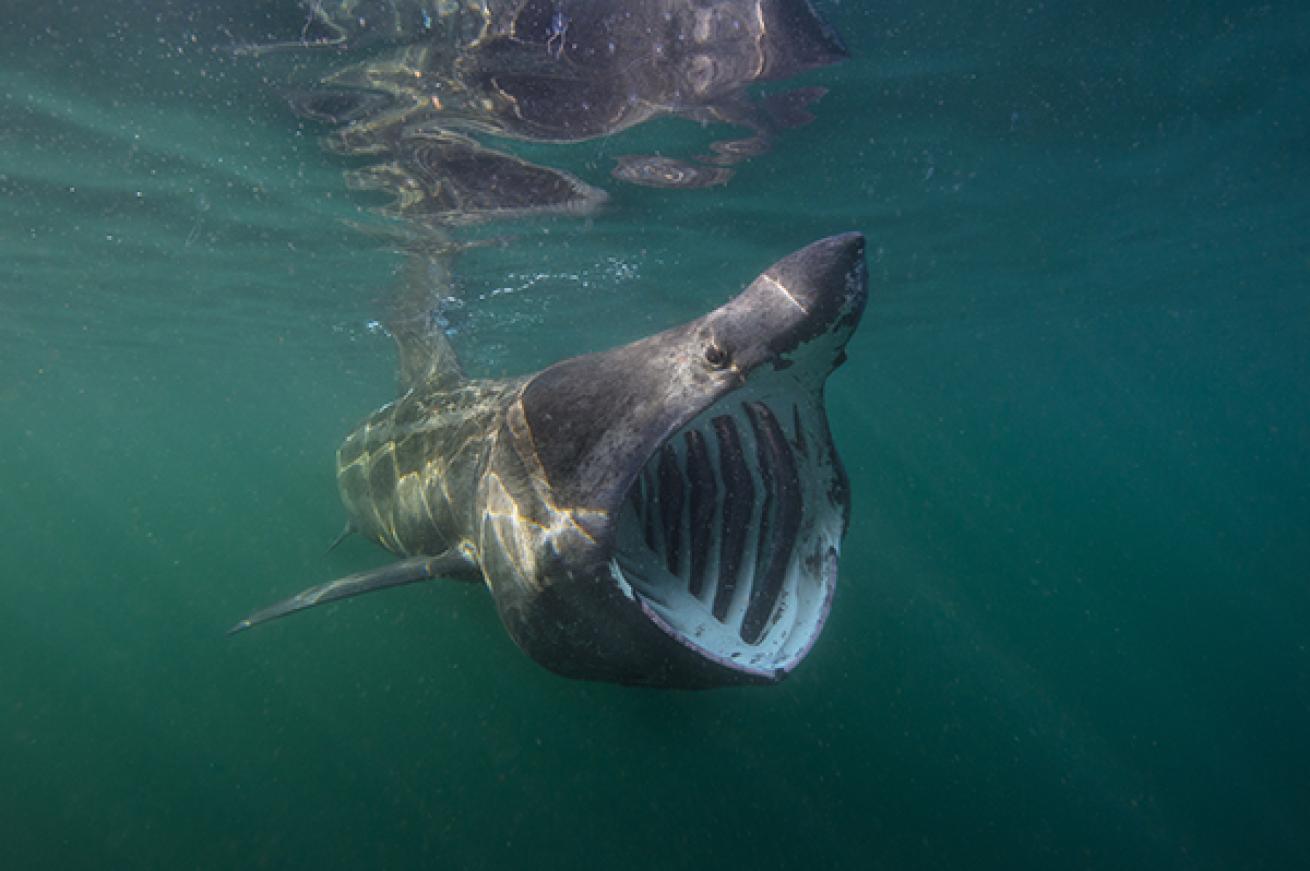
Alexander Mustard, amustard.comBasking sharks might be the second-largest species of shark, but they're no less impressive.
During the high season — which lasts from May to September — up to 130 individual sharks have been documented in a single day. A snorkeling interaction, the experience adheres to strict Scottish Marine Wildlife Watching Code to avoid any negative impact on the animal, including limiting numbers to four humans per shark — and absolutely no touching. And beyond the main attraction, other wildlife sightings are common, including whales, dolphins, otters, seals and more, plus you’re surrounded by the stunning Scottish highlands with an island archipelago of pristine beaches, volcanic formations and unique whirlpools. — Shane Wasik
Make It Happen: Basking Shark Scotland, baskingsharkscotland.co.uk
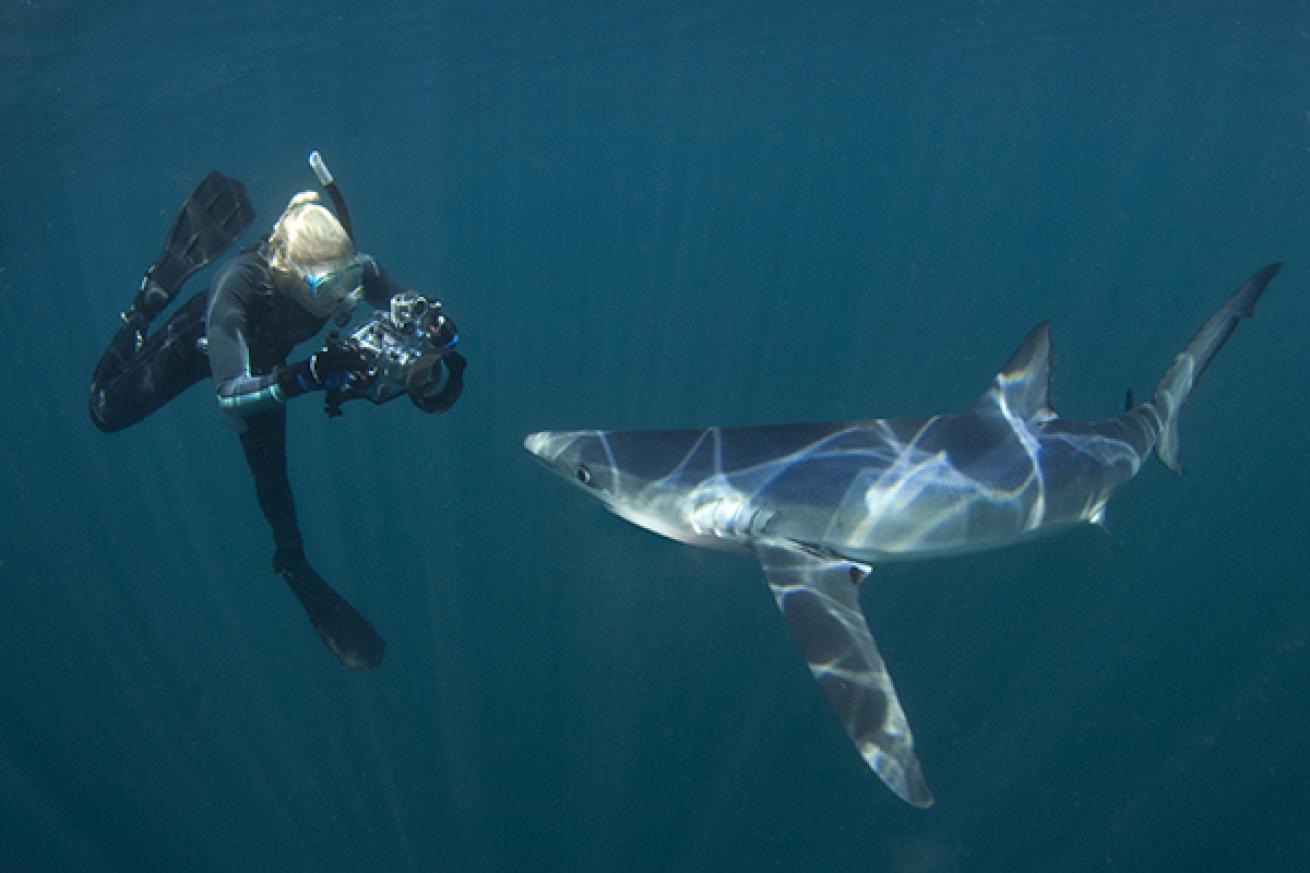
Andy MurchBlue shark photo ops are typically up close, like this one.
Blue and Mako Sharks
Rhode Island, USA
Thirty to 50 miles from the rocky shores of Rhode Island, everything we encounter is a wild, pelagic animal — things you’re never going to see anywhere else. Blue sharks, mako sharks, oceanic sunfish, whales — these are animals you’ll never find in any zoo or aquarium.
What we do is a low-signature photography expedition. We use the bare minimum of equipment (no dive gear, snorkeling only) to bring the sharks as close to the photographers as possible at the surface. It’s a hands-on guided tour. Groups are small (five to six total, with only one to two in the water at a time). We’re with you at all times to teach you what the animals are doing, what they might be thinking. Some of the blue sharks get up to 10 and 12 feet long, and they’re very interactive. Everything they see or smell at the surface is worthy of being investigated.
We lure with a long trail of scent, limiting the amount in a natural way so the animal will interact a little longer. Photographers will be in the middle of them, but the sharks accept them as another predator looking at that food source, like they do with dolphins and other fish. The bait is so controlled that we can tell you where the shark’s going to be to set up the type of shot you want. It’s not a Mountain Dew crowd; it’s not a cage-diving crowd. We know what the animal is going to do and where. If you go at it the wrong way, you’re going to get a negative reaction.
We want a positive interaction, so the way we go about it is with as much education and as much experience as possible. — Joe Romeiro
Make It Happen: 333 productions, 333productions.com
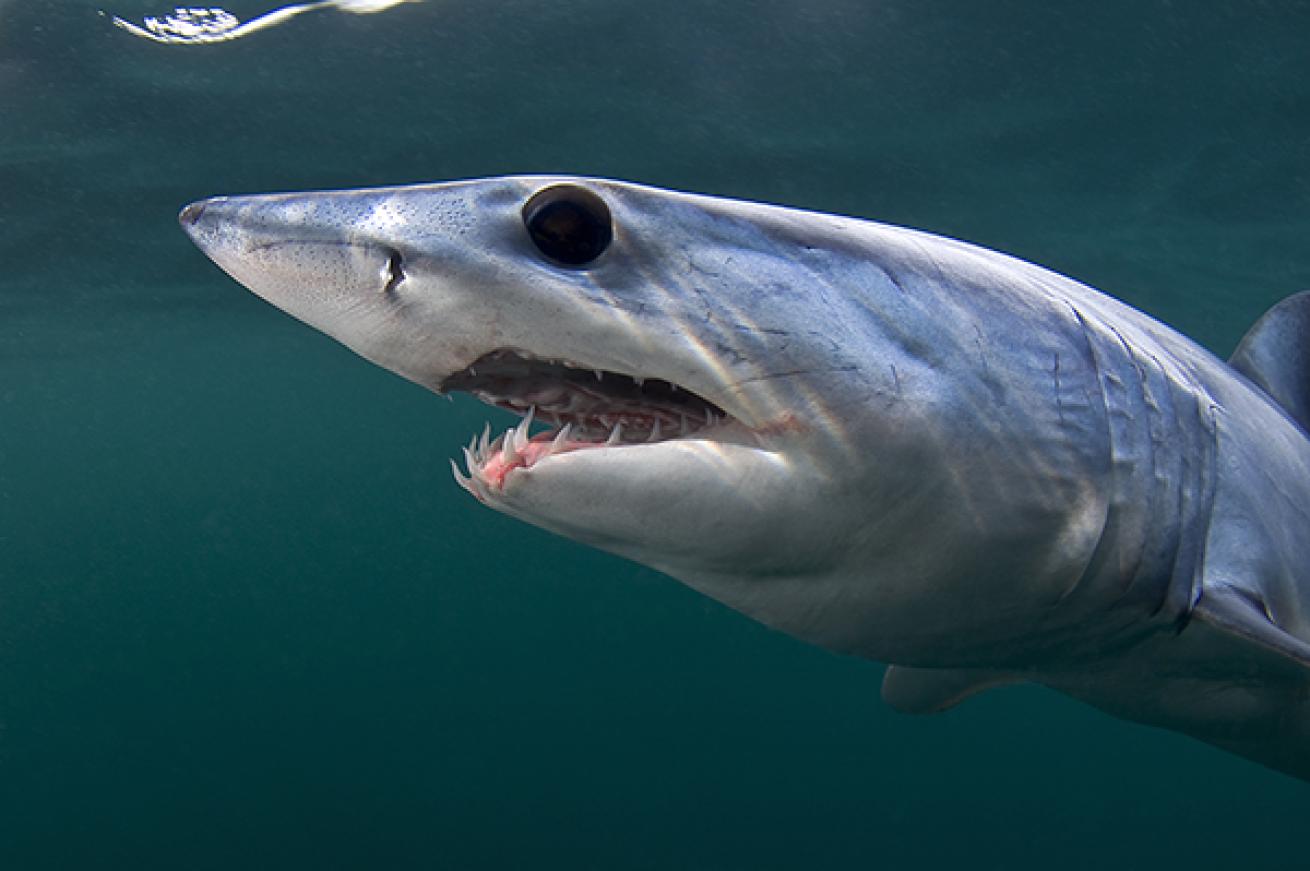
Bill FisherSleek mako sharks are one of the most heavily harvested species.
Thresher Sharks
Monad Shoal, Philippines
The Filipino banca boat rocks gently as the gray predawn light starts to creep over Cebu’s distant mountains. It is 5:30 a.m. on Monad Shoal, one of the only known and accessible cleaning stations for the pelagic thresher shark (Alopias pelagicus). We are alert and restless, rechecking our camera gear — again.
Over the past two days, we have learned that earlier is better for seeing threshers — and the fewer the people, the better the odds. Our descent is with cameras devoid of lights or strobes, as threshers are notoriously shy. Most divers will go a lifetime without seeing one, and I don’t plan to miss this opportunity. We glide over the edge of the plateau-like shoal to take a deeper position, sit motionless and wait. Imagine turning to stone — that’s the technique.
Black water gradually brightens to indigo and begins to welcome a cerulean transition. Without warning, an almost impossible apparition appears, then second and a third. Their scythe-like tails flow like serpentine ribbons in the current. Enormous dark eyes contrast starkly with skin that reflects light like dull mercury. It is tempting to remain awestruck, to avoid breaking the spell with that first noisy shutter release. But they have already spotted us.
Pass after pass, we are treated to their dance only yards from our cameras, a moment that defies all the rules we are taught about deepwater sharks. Then suddenly, there is movement toward the surface as I spot the far-more-awkward motions of other divers descending our way, and I know our moment is ending. But that’s all right; I have already set my alarm clock for 4:00 a.m. tomorrow. — Tanya G. Burnett
Make It Happen: Sea Explorers, sea-explorers.com
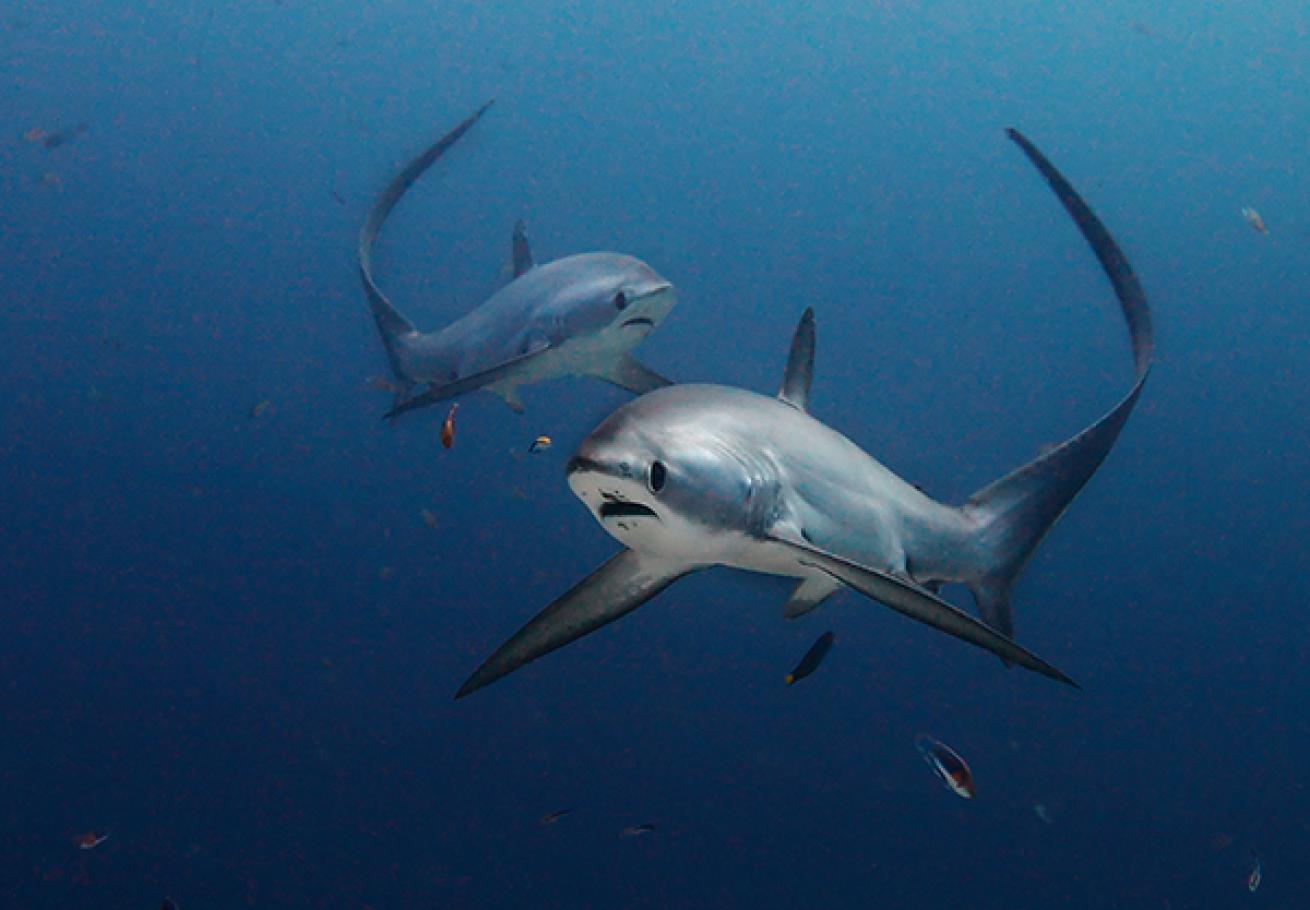
Alexey StoydaOtherworldly thresher sharks are secretive and rare to encounter.
Caribbean Reef Sharks
New Providence Island, Bahamas
If you think you can't handle a shark dive, you might want to start with the Caribbean reef shark dive at Stuart Cove's Dive Bahamas, which is where I made my first shark dive, nearly 25 years ago. This well-run operation pioneered shark diving in the Bahamas.
Stuart Cove’s shark-feeding experience is one of the most famous dives in the world — and with good reason. It’s controlled chaos — a frenzy of action that’s nearly impossible to keep up with. This could quite possibly be the most exciting dives you will ever do.
Your first dive is a 'free swim" with the sharks. As you explore a beautifully decorated wall, the sharks will follow you throughout the dive (they know you're close to the feeding site). However, no bait is used during this dive. This keeps the sharks curious and creates a very natural encounter for divers - just as you would encounter a shark in the wild.
The second dive is a shark-feeding dive. Divers form a semi-circle in front of a professional shark feeder who controls the release of food. The heart-pounding excitement that ensues is a real thrill. — Patricia Wuest
Make It Happen: Stuart Cove's Dive Bahamas
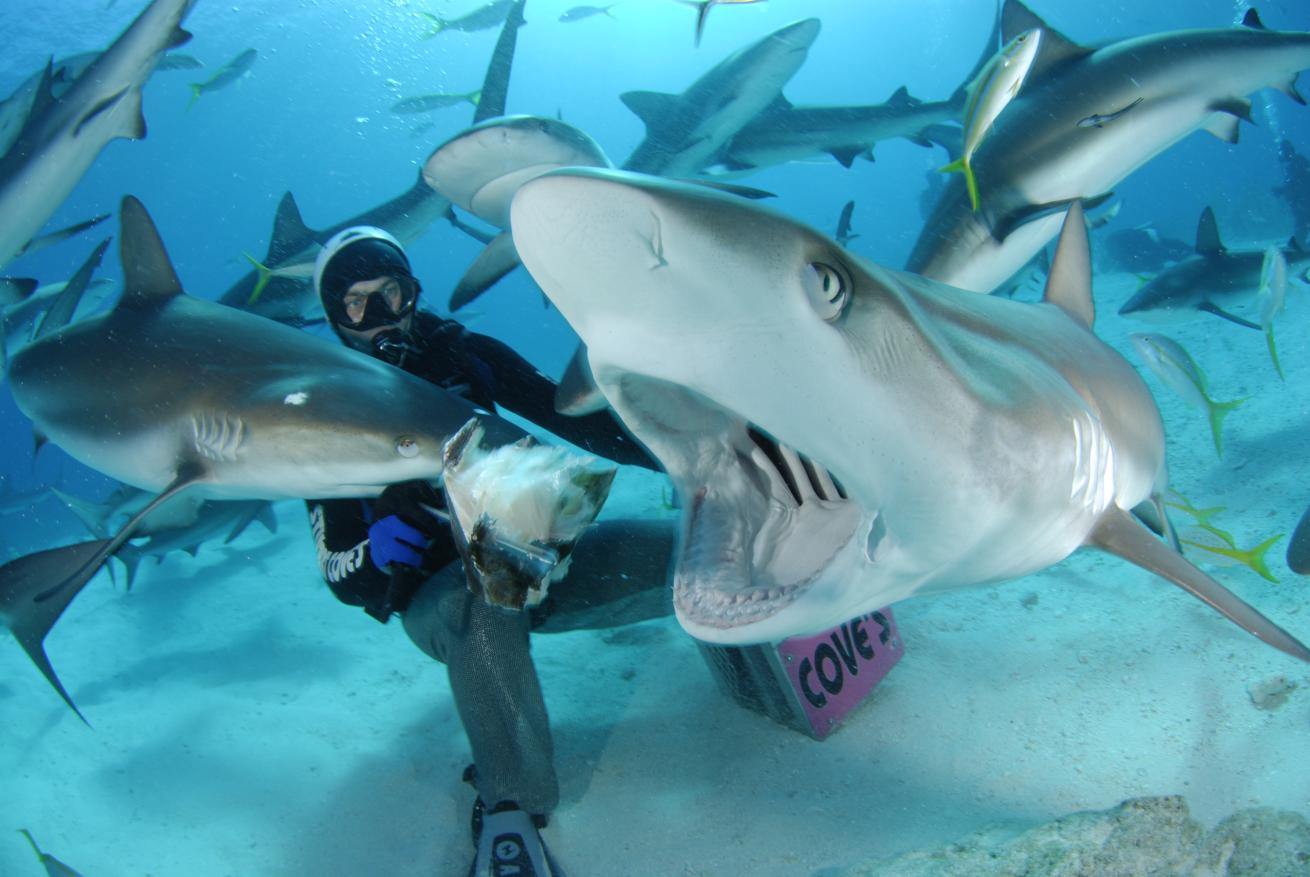
Stuart Cove's Dive BahamasStuart Cove’s shark-feeding experience in New Providence Island, Bahamas, is one of the most famous dives in the world.
Broadnose Sevengill Sharks
False Bay, South Africa
“You are all too soft!” jabs Shark Explorers guide Morne Hardenberg with an ironic smile as he pours hot water into his 5 mm wetsuit and plunges into the frigid 57-degree water of False Bay. At these temperatures, a drysuit would be optimal, but a 7 mm semidry wetsuit does the job as well. In addition to offshore dives with great whites, blues and makos commonly associated with these waters, the South African shark-diving specialists also offer a far more surreal encounter closer to shore.
In the thick, dark kelp forests that grow at a depth from 30 to 45 feet, a prehistoric hunter lurks amid this mystical atmosphere of green water and towering trees: the sevengill shark. It is a prime environment for fur seals, the shark's primary diet, and on any given day, between one- and five-dozen of these unique seven-gilled sharks (other species have five) can be found prowling the kelp for a meal — so there’s no need for bait.
“Only a few years ago this kind of shark was very rare around Cape Town, but nowadays we are getting plenty of them,” Hardenberg explained topside. One reason could be that the local population of its natural enemy, the great white, has been reduced. On today’s dive sevengills are abundant — 10 individuals.
From out of nowhere, a 9-footer emerges from the kelp and makes a meandering path through the group and on a collision course with my camera’s dome port. At the last minute, the shark swerves and disappears into the forest, but it has left a lasting impression. — Tobias Friedrich
Make It Happen: Shark Explorers, sharkexplorers.com
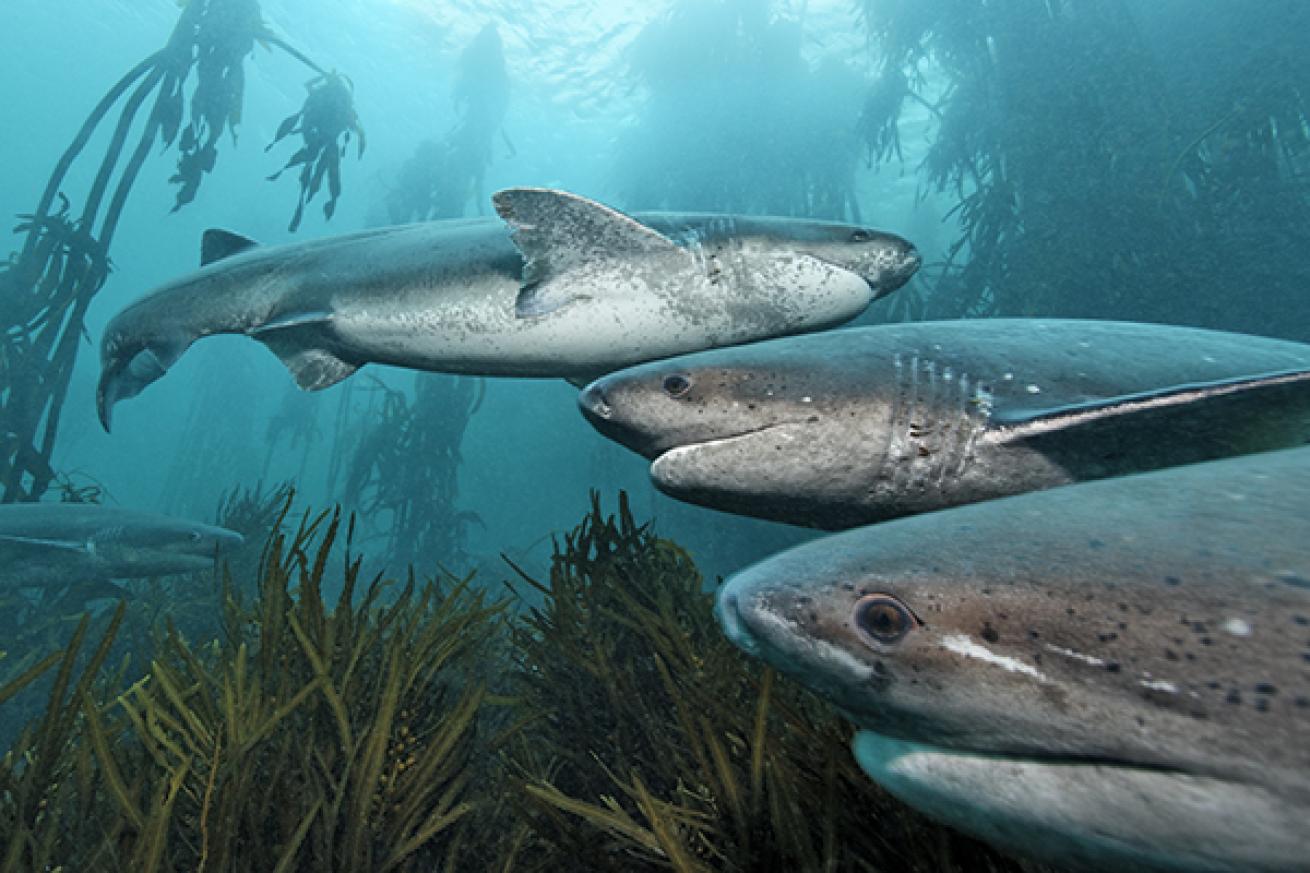
Tobias FriedrichSouth Africa's temperate kelp forests are a favorite hunting ground for broadnose sevengill sharks.
MORE FAVORITE SHARK ENCOUNTERS
1 | Tiger Sharks Tiger Beach, Bahamas Stuart Cove’s stuartcove.com
2 | Great White Sharks South Australia Rodney Fox Shark Expeditions rodneyfox.com.au
3 | Scalloped Hammerheads Galapagos Islands, Ecuador Galapagos Aggressor aggressor.com
4 | Whale Sharks Isla Mujeres, Mexico Pro Dive Mexico prodivemex.com
5 | Great White Sharks Isla Guadalupe, Mexico Islander Charters islander-charters.com
6 | Bull Sharks Beqa Lagoon, Fiji Aqua-Trek aquatrek.com
7 | Scalloped Hammerheads Cocos Island, Costa Rica Okeanos Aggressor
8 | Gray Reef Sharks Blue Corner, Palau Sam’s Tours samstours.com
9 | Whale Sharks Caribbean Sea, off southern Belize Belize Splash Dive Center splashbelize.com
10 | Great White Sharks Gansbaai, South Africa Marine Dynamics sharkwatchsa.com
11 | Bull Sharks Playa del Carmen, Mexico Phocea Mexico phoceamexico.com
12 | Whale Sharks Maldives Four Seasons Explorer fourseasons.com
13 | Caribbean Reef Sharks Grand Bahama Island, Bahamas UNEXSO unexso.com
14 | Whale Sharks Bay Islands, Honduras Deep Blue Utila deepblueutila.com
15 | Gray Reef Sharks Great Barrier Reef, Australia Mike Ball Dive Expeditions mikeball.com
Are you a diver who is always looking for his or her next challenge? Check out these exciting purpose-sunk wrecks, daredevil dives with dangerous animals, and cave-diving adventures.










